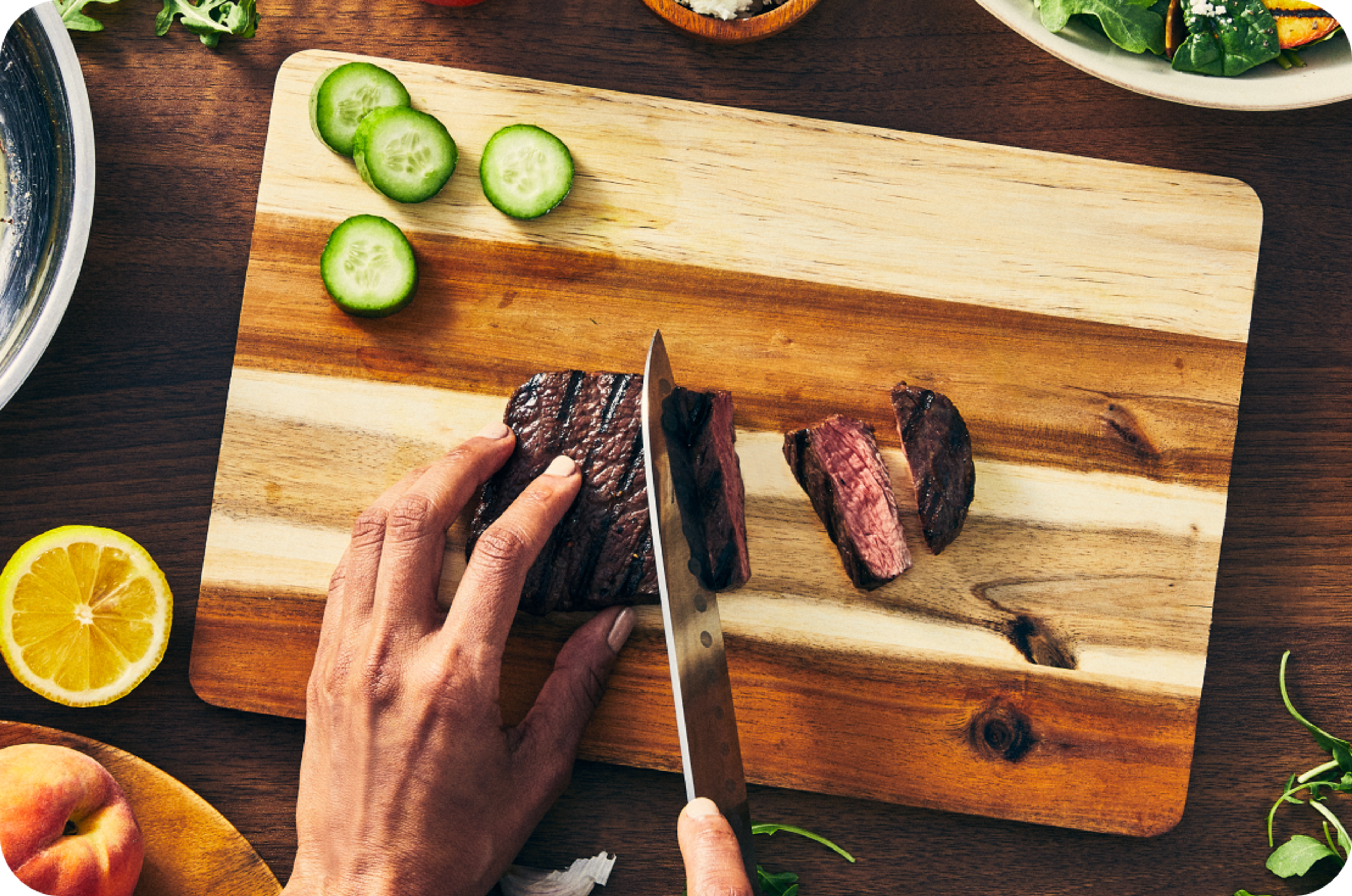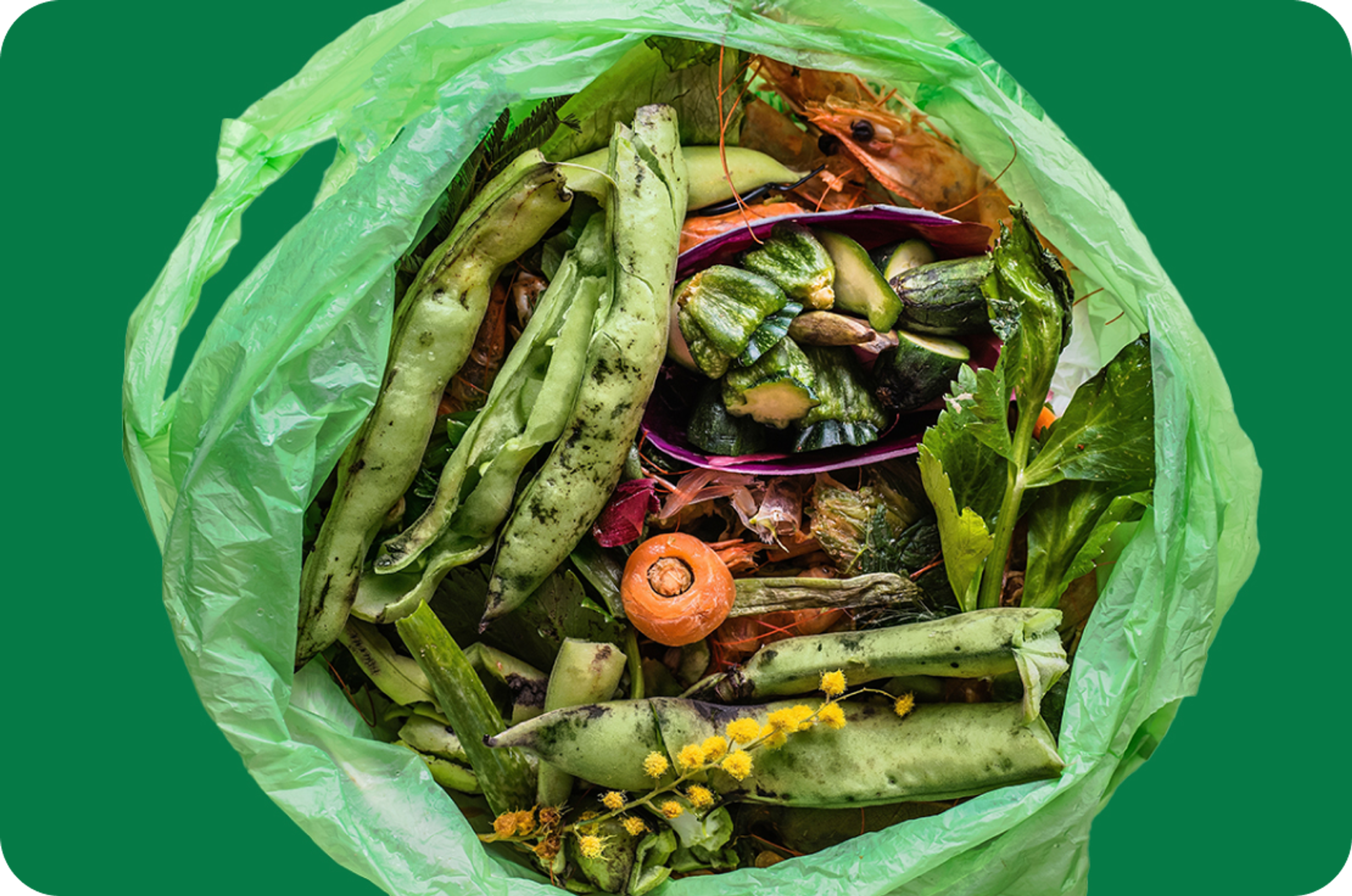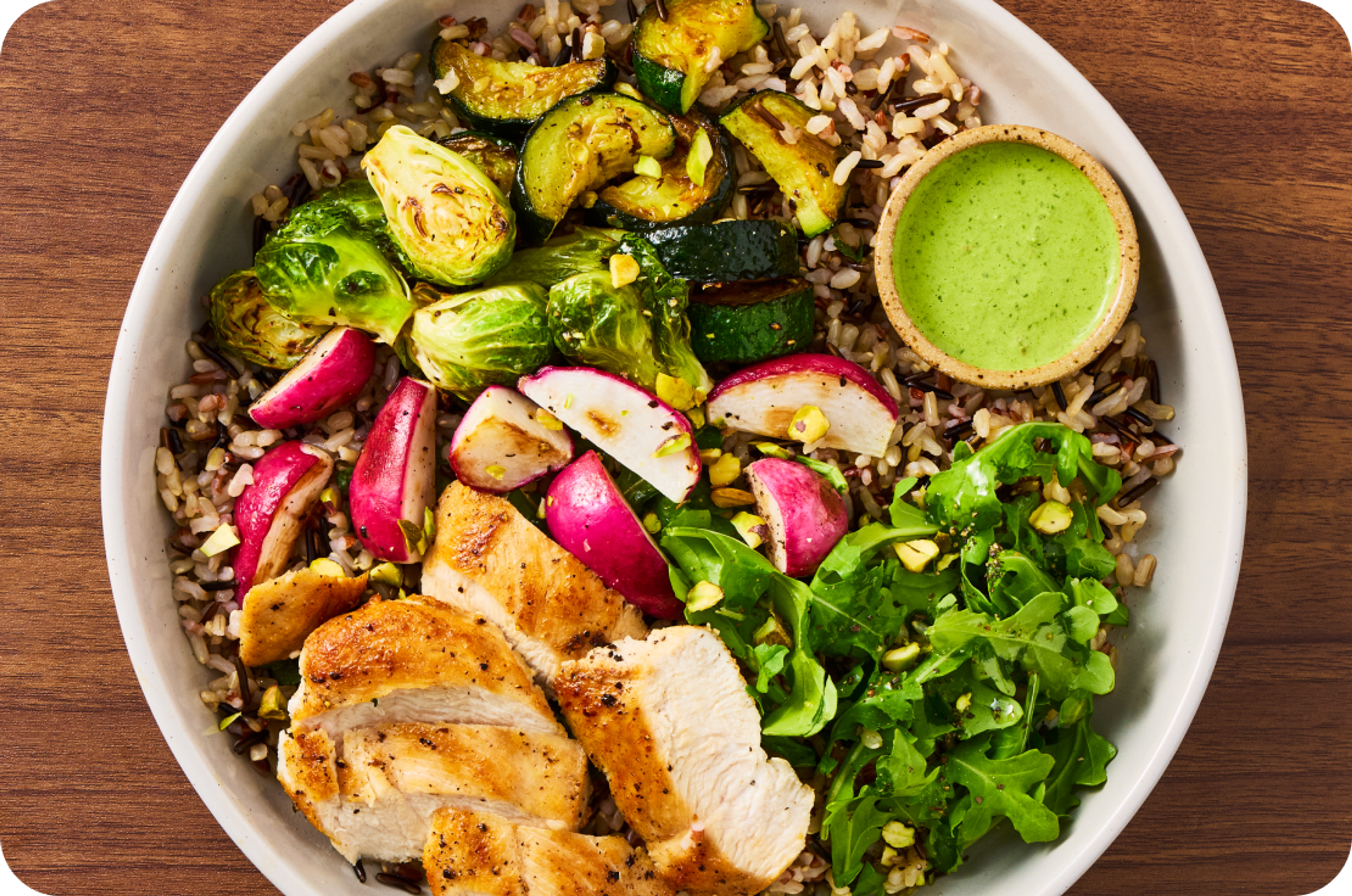The 2025-2026 State of Home Cooking Report
The Inspiration and Motivations Behind How Americans are Cooking Today
The Inspiration and Motivations Behind How Americans are Cooking Today
EXECUTIVE SUMMARY
Cooking is more than a daily task – it’s a spark for connection and a reflection of our lives. In 2025-2026, Americans will gather in the kitchen to chop, dice, laugh, share stories and savor the food that brings people together.
In the wake of the pandemic, many people rediscovered home cooking as a mindful ritual that fosters connection, creativity, and well-being. Now, five years later, mealtime continues to evolve as Americans adapt to shifting lifestyles, wellness trends, new technologies, social media influence, and ongoing economic pressures. People are discovering that mealtime is about more than just getting food on the table – it’s about setting aside time for the highest form of self-care. In fact, 93% of Americans expect to cook as much as last year or more in the next 12 months than they did the previous year. That means more recipes tested, more meals shared, and more hands-on involvement in our food.
To better understand how outside forces are shaping behavior in the kitchen, HelloFresh conducted its first-annual State of Home Cooking report. In partnership with Wakefield Research, HelloFresh surveyed 5,000 U.S. adults ages 18+. The findings offer a real-time snapshot of how people are cooking today, how they plan to cook in the year ahead, and what barriers stand in their way of a good meal. It’s all with the aim of helping people to rediscover the joy, connection, and sense of contentment that comes with preparing food for the ones who matter most.
In the wake of the pandemic, many people rediscovered home cooking as a mindful ritual that fosters connection, creativity, and well-being. Now, five years later, mealtime continues to evolve as Americans adapt to shifting lifestyles, wellness trends, new technologies, social media influence, and ongoing economic pressures. People are discovering that mealtime is about more than just getting food on the table – it’s about setting aside time for the highest form of self-care. In fact, 93% of Americans expect to cook as much as last year or more in the next 12 months than they did the previous year. That means more recipes tested, more meals shared, and more hands-on involvement in our food.
To better understand how outside forces are shaping behavior in the kitchen, HelloFresh conducted its first-annual State of Home Cooking report. In partnership with Wakefield Research, HelloFresh surveyed 5,000 U.S. adults ages 18+. The findings offer a real-time snapshot of how people are cooking today, how they plan to cook in the year ahead, and what barriers stand in their way of a good meal. It’s all with the aim of helping people to rediscover the joy, connection, and sense of contentment that comes with preparing food for the ones who matter most.
Key Findings

93% expect to cook as much as last year or more in the next 12 months

Among those who plan to cook more in the next year, the economy (85%) and their health (81%) are factors

Nearly half of adults (49%) have felt guilty getting food from a restaurant (such as delivery, takeout, or eating out) instead of cooking at home

69% have used AI to get dinner on the table or are open to the idea of it

93% expect to cook as much as last year or more in the next 12 months

Among those who plan to cook more in the next year, the economy (85%) and their health (81%) are factors

Nearly half of adults (49%) have felt guilty getting food from a restaurant (such as delivery, takeout, or eating out) instead of cooking at home

69% have used AI to get dinner on the table or are open to the idea of it

71% find cooking to be more stress-relieving than stressful

52% view dinner as a time to connect with friends or family

83% believe that eating with others is better for their mental health

58% have felt so proud of something they cooked that they posted pics of it online

71% find cooking to be more stress-relieving than stressful

52% view dinner as a time to connect with friends or family

83% believe that eating with others is better for their mental health

58% have felt so proud of something they cooked that they posted pics of it online
How Americans are Doing Dinner in 2025
While it might seem like Americans are living a grab-and-go lifestyle, dinner is still an important ritual for most. Coming together with friends or family to break bread regularly is the norm. In fact, 69% of adults have sit-down dinners at home with others most or even every day of the week. Millennials are the ones doing this more than other generations, possibly because they’re the ones with young children (76% vs 68% of Gen Z, 69% of Gen X, and 67% of Boomers).
And while getting those sit-down dinners together can be considered a chore, the majority of Americans actually have positive feelings about cooking for friends and family. A noteworthy 53% feel joyful when cooking for others, with more men (56%) than women (51%) who feel this way. Conversely, very few feel that cooking for others makes them stressed (12%) or bored (5%).
These positive vibes are even more remarkable when you consider the fact that more than half of those who cook (58%) are fixing dinner for picky eaters. This jumps to 80% of parents, who know not to put any “green stuff” in the pasta or to let the potatoes touch the meatloaf.
One way Americans are ensuring everyone gets what they like is to have the same meals on repeat. Most adults (86%) are “meal repeaters,” eating the same meals over and over at least some of the time. While 60% do so because it ensures that everyone gets what they like, for 21% it’s because they lack the energy to cook a new recipe.
Although many may initially think repetition could be boring, repeat meals can be fun. Over a quarter of Americans (26%) cook certain meals on specific days of the week (ie; “Meatless Monday”, “Pizza Friday”, etc.). Afterall, “Taco Tuesday” is always something to look forward to.
Meal inspiration can come from the first letter of the day of the week, or it can also come from social media. For some, TikTok and Instagram make them feel like they can’t measure up, but for others social media is a source of inspiration. More than two-thirds of adults (71%) view beautiful food content as inspiring, not intimidating. Only 10% believe that seeing these types of pictures on social makes them feel like cooking new things is unattainable.
It makes sense then that 52% of Americans look to social media for new recipe inspiration. Still a large share (56%) get ideas the old-fashioned way – from cookbooks, cooking shows, or websites, while many turn to those who are perhaps at the dinner table with them, and get ideas from friends and family (55%).
And while getting those sit-down dinners together can be considered a chore, the majority of Americans actually have positive feelings about cooking for friends and family. A noteworthy 53% feel joyful when cooking for others, with more men (56%) than women (51%) who feel this way. Conversely, very few feel that cooking for others makes them stressed (12%) or bored (5%).
These positive vibes are even more remarkable when you consider the fact that more than half of those who cook (58%) are fixing dinner for picky eaters. This jumps to 80% of parents, who know not to put any “green stuff” in the pasta or to let the potatoes touch the meatloaf.
One way Americans are ensuring everyone gets what they like is to have the same meals on repeat. Most adults (86%) are “meal repeaters,” eating the same meals over and over at least some of the time. While 60% do so because it ensures that everyone gets what they like, for 21% it’s because they lack the energy to cook a new recipe.
Although many may initially think repetition could be boring, repeat meals can be fun. Over a quarter of Americans (26%) cook certain meals on specific days of the week (ie; “Meatless Monday”, “Pizza Friday”, etc.). Afterall, “Taco Tuesday” is always something to look forward to.
Meal inspiration can come from the first letter of the day of the week, or it can also come from social media. For some, TikTok and Instagram make them feel like they can’t measure up, but for others social media is a source of inspiration. More than two-thirds of adults (71%) view beautiful food content as inspiring, not intimidating. Only 10% believe that seeing these types of pictures on social makes them feel like cooking new things is unattainable.
It makes sense then that 52% of Americans look to social media for new recipe inspiration. Still a large share (56%) get ideas the old-fashioned way – from cookbooks, cooking shows, or websites, while many turn to those who are perhaps at the dinner table with them, and get ideas from friends and family (55%).

Yes, Chef!
How We Cook and Eat Can Curb Stress and Support Mental Health
Gathering around the table is about more than just the food on the plates – for 52% of Americans it’s a time to connect with friends or family. And while dinner may be chaotic for a few (9%), many more (44%) view it as a time to decompress at the end of a long day.
Most (83%) believe that eating with others is better for their mental health than eating alone. Conversation, camaraderie, and a chance to connect are all reasons why it’s better to break bread together.
In fact, even the preparation to get dinner on the table can be relaxing. A strong majority (71%) find cooking to be more stress-relieving than stressful. Interestingly, this jumps to 78% among those who tend to try new things for dinner, compared to 64% of those who usually eat the same meals. There are several factors that contribute to dinner being a way to relax. For 58%, dinner is stress-relieving because it allows them to be creative. Cooking is also a welcome break from other tasks – 41% enjoy the sensory experience of touching and smelling different ingredients, while 32% welcome it as a time to disconnect from screens.
Despite the aforementioned benefits, there are days when Americans wish they weren’t tasked with the responsibility of cooking. Among those who cook, nearly two-thirds (64%) have wanted to “quit dinner” at some point. Yet this largely depends on how Americans find the experience of cooking. Among those who find it stressful, 89% have wished they could “quit dinner,” compared to 55% of those who find cooking a stress relieving activity.
Most (83%) believe that eating with others is better for their mental health than eating alone. Conversation, camaraderie, and a chance to connect are all reasons why it’s better to break bread together.
In fact, even the preparation to get dinner on the table can be relaxing. A strong majority (71%) find cooking to be more stress-relieving than stressful. Interestingly, this jumps to 78% among those who tend to try new things for dinner, compared to 64% of those who usually eat the same meals. There are several factors that contribute to dinner being a way to relax. For 58%, dinner is stress-relieving because it allows them to be creative. Cooking is also a welcome break from other tasks – 41% enjoy the sensory experience of touching and smelling different ingredients, while 32% welcome it as a time to disconnect from screens.
Despite the aforementioned benefits, there are days when Americans wish they weren’t tasked with the responsibility of cooking. Among those who cook, nearly two-thirds (64%) have wanted to “quit dinner” at some point. Yet this largely depends on how Americans find the experience of cooking. Among those who find it stressful, 89% have wished they could “quit dinner,” compared to 55% of those who find cooking a stress relieving activity.

When It Comes to Social Media and Trends, Our Meals are the Reel Deal
The Top Obstacles Americans are Facing at Mealtime
What’s keeping adults from getting dinner done? There are many factors, but one of the biggest challenges is shopping, as a significant 38% of Americans don’t have groceries on hand when they need them.
For many, meal prep is a great solution for always having healthy options at the ready. While it’s certainly become trendy to batch cook recipes and store them in clear containers (and to post pictures online!) not everyone feels confident in their ability to whip up a week’s worth of food. The majority of adults (52%) aren’t the type to meal prep, while 48% feel food-preppy.
Knowing your way around the kitchen certainly goes a long way toward ensuring meals are served up regularly. But a striking quarter of adults (25%) skip preparing specific foods because they are not confident using a knife. Having those basic kitchen skills under their belts could mean the difference between getting dinner done or ordering out!
Recipe ruts are also a barrier to cooking. For 58%, being bored with the same recipes is a reason they expect their household to cook less in the next 12 months compared to last year. Spicing things up with new ingredients could help, but most folks are not expanding their palates – more than half of adults (52%) did not try a new food or ingredient in the last month.
So how do Americans get dinner on the table despite these obstacles? Many (81%) are using shortcuts like meal prep kits or ready-to-eat meals in order to more easily get a hot meal plated. A notable 39% use these shortcuts at least once a week, while half of Millennials (50%) rely on this weekly, more than any other generation.
For many, meal prep is a great solution for always having healthy options at the ready. While it’s certainly become trendy to batch cook recipes and store them in clear containers (and to post pictures online!) not everyone feels confident in their ability to whip up a week’s worth of food. The majority of adults (52%) aren’t the type to meal prep, while 48% feel food-preppy.
Knowing your way around the kitchen certainly goes a long way toward ensuring meals are served up regularly. But a striking quarter of adults (25%) skip preparing specific foods because they are not confident using a knife. Having those basic kitchen skills under their belts could mean the difference between getting dinner done or ordering out!
Recipe ruts are also a barrier to cooking. For 58%, being bored with the same recipes is a reason they expect their household to cook less in the next 12 months compared to last year. Spicing things up with new ingredients could help, but most folks are not expanding their palates – more than half of adults (52%) did not try a new food or ingredient in the last month.
So how do Americans get dinner on the table despite these obstacles? Many (81%) are using shortcuts like meal prep kits or ready-to-eat meals in order to more easily get a hot meal plated. A notable 39% use these shortcuts at least once a week, while half of Millennials (50%) rely on this weekly, more than any other generation.

Waste Not, Want Not
The Food Choices Americans are Making Reflect Their Health Goals for 2025-2026
Americans are exercising, tracking their protein intake, and racking up 10,000 steps on their smartwatches. It makes sense then that a desire to eat healthier is a big reason people are rolling up their sleeves in the kitchen. For 81%, health is a reason they’ll be cooking more over the next 12 months. This is especially the case for men (85%) vs women (78%) and dads (90%) compared to moms (80%) who intend to cook more in the next 12 months.
“Going green” is a surefire way to get all your vitamins and minerals. While the majority of Americans (57%) claim to already be eating a large variety of veggies, a similar share (51%) also have the goal of eating more vegetables over the next 12 months. When it comes to filling your plate with spinach, carrots, and asparagus, more is better!
Whether you’re getting enough protein has been a hot topic in the news as of late, so it’s no wonder that Americans are prioritizing it in their diets. Eating protein is an equal or even greater priority than it was 12 months ago for 82% of Americans. Millennials are even more focused on this macronutrient, as 43% have made it a greater priority compared to 34% of adults overall.
“Going green” is a surefire way to get all your vitamins and minerals. While the majority of Americans (57%) claim to already be eating a large variety of veggies, a similar share (51%) also have the goal of eating more vegetables over the next 12 months. When it comes to filling your plate with spinach, carrots, and asparagus, more is better!
Whether you’re getting enough protein has been a hot topic in the news as of late, so it’s no wonder that Americans are prioritizing it in their diets. Eating protein is an equal or even greater priority than it was 12 months ago for 82% of Americans. Millennials are even more focused on this macronutrient, as 43% have made it a greater priority compared to 34% of adults overall.

AI May Play a Larger Role When It Comes to Dinnertime
The Economy is Affecting How (and What) We Eat
It’s no secret that prices at the grocery store have been erratic. This has had a significant effect on how Americans are buying food – and whether they can put healthy food on the table. Many have gone without items that they would normally purchase due to price hikes, and for a significant number of people, saving money is a motivator for cooking (54%). In fact, 68% did not buy a food item they usually get in the past 12 months because the price was too high. This is highest among Gen Z (72%), Millennials (72%), and Gen X (71%) compared to Boomers (60%).
For a notable 67%, rising prices over the last 12 months have made it harder to buy healthy food. When you don’t feel like you can put healthy food on the table, morale can really suffer. But Americans aren’t giving up.
The vast majority of adults, 93%, plan to cook at least as much as last year, if not more, over the next 12 months. And 85% of those who plan to cook more over the next 12 months will do so as a response to the economy.
Dining out is an additional expense, and it can be a nice treat, but for many it’s also a source of guilt. Nearly half of adults (49%) felt guilty getting food from a restaurant (such as delivery, takeout, or eating out) instead of cooking at home. And more than a quarter (26%) have felt guilty specifically due to the added cost of dining out.
For a notable 67%, rising prices over the last 12 months have made it harder to buy healthy food. When you don’t feel like you can put healthy food on the table, morale can really suffer. But Americans aren’t giving up.
The vast majority of adults, 93%, plan to cook at least as much as last year, if not more, over the next 12 months. And 85% of those who plan to cook more over the next 12 months will do so as a response to the economy.
Dining out is an additional expense, and it can be a nice treat, but for many it’s also a source of guilt. Nearly half of adults (49%) felt guilty getting food from a restaurant (such as delivery, takeout, or eating out) instead of cooking at home. And more than a quarter (26%) have felt guilty specifically due to the added cost of dining out.

Culinary Companion or Kitchen Clutter
CONCLUSION
While factors such as the busyness of life and the uncertainty of the economy may make it feel like gathering for dinner is an impossible feat, almost all American households (93%) are committed to the idea of cooking at least the same amount or more in the next year. From saving money to spending quality time with friends and family, and even preserving their mental health, there are many positive motivators that are inspiring adults to get into the kitchen (and whip up something juicy for loved ones!).
Americans face a variety of obstacles when trying to get dinner on the table, ranging from a lack of groceries to a resistance of meal prepping. In addition to making it difficult for them to execute on any inspirational pics they see on social media, these impediments also play a role in the sense of boredom consumers have when it comes to recipes.
Physical and mental health are important areas behind the “how” and “why” Americans are cooking in 2025-2026. While many aspire to eat more vegetables and prioritize their protein intake, there is a disconnect when it comes to them trying out new foods or ingredients – most just aren’t doing this.
Regardless of whether they are novices or pros at getting food on the table, the act of gathering to connect over a meal means a boost to their mental health, providing nourishment for both the brain and the body.
Americans face a variety of obstacles when trying to get dinner on the table, ranging from a lack of groceries to a resistance of meal prepping. In addition to making it difficult for them to execute on any inspirational pics they see on social media, these impediments also play a role in the sense of boredom consumers have when it comes to recipes.
Physical and mental health are important areas behind the “how” and “why” Americans are cooking in 2025-2026. While many aspire to eat more vegetables and prioritize their protein intake, there is a disconnect when it comes to them trying out new foods or ingredients – most just aren’t doing this.
Regardless of whether they are novices or pros at getting food on the table, the act of gathering to connect over a meal means a boost to their mental health, providing nourishment for both the brain and the body.